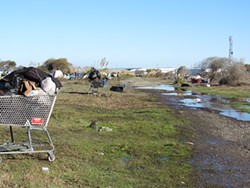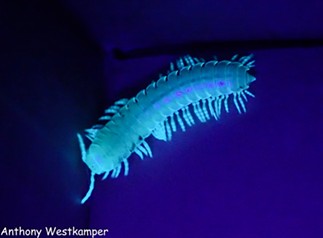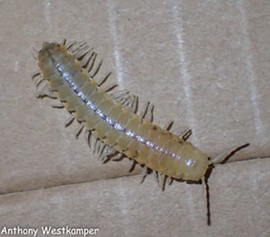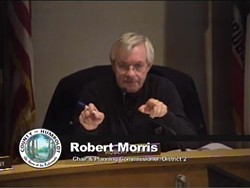Sunday, January 24, 2016
Yurok Tribe Declares Emergency After Rash of Suicides
Posted By Thadeus Greenson on Sun, Jan 24, 2016 at 10:04 AM
The Yurok Tribe has declared a state of emergency after seven young tribal members took their own lives over an 18-month span.
The tribe is working with tribal, state and federal agencies and developing a "broad, collaborative plan to identify the root causes of this epidemic," according to a press release. All of the suicides were committed by tribal members between the ages of 16 and 31, and all took place in or near Weitchpec, an isolated community in north-eastern Humboldt County, north of Hoopa.
The tribe's declaration comes on the heels of a year when Humboldt County recorded the most suicides its seen in at least five years, with 41 people having taken their own lives within the county's borders. Per-capita, Humboldt's suicides rates in 2015 were nearly three times the state average of 10.2 per 100,000 residents. Officials have pointed to a variety of factors that may contribute to the high numbers, including high rates of drug and alcohol abuse, poverty and challenges accessing mental health services.
See the full press release from the Yurok Tribe copied below:
The tribe is working with tribal, state and federal agencies and developing a "broad, collaborative plan to identify the root causes of this epidemic," according to a press release. All of the suicides were committed by tribal members between the ages of 16 and 31, and all took place in or near Weitchpec, an isolated community in north-eastern Humboldt County, north of Hoopa.
The tribe's declaration comes on the heels of a year when Humboldt County recorded the most suicides its seen in at least five years, with 41 people having taken their own lives within the county's borders. Per-capita, Humboldt's suicides rates in 2015 were nearly three times the state average of 10.2 per 100,000 residents. Officials have pointed to a variety of factors that may contribute to the high numbers, including high rates of drug and alcohol abuse, poverty and challenges accessing mental health services.
See the full press release from the Yurok Tribe copied below:
Yurok Tribe declares State of Emergency
The Yurok Tribal Council is working with Tribal, state and federal agencies to address an alarming increase in the number of suicides committed by young Yurok people.
In the last 18 months, seven Tribal members, ranging in age from 16-31, took their own lives. In response to this perplexing pattern, the Tribal Council issued an emergency declaration on December 28. The Tribe is also developing a broad, collaborative plan to identify and resolve the root causes of this epidemic.
“My heart goes out to all of the people, directly or indirectly, impacted by this tragedy,” said James Dunlap, Chairman of the Yurok Tribe. “We are doing everything we can to answer the community’s call for a culturally appropriate response to this crisis.”
All of the suicides happened near Weitchpec, a small, isolated community of only 150 individuals, located on the east side of the Yurok Reservation. The culturally significant site sits just above the confluence of the Klamath and Trinity Rivers, in one of the most remote and rugged parts of the United States. Residents there have almost no cell or internet coverage. Many family homes do not yet have electricity. Getting groceries requires an hour-long drive and transportation is difficult due to the fact that there is only one paved road.
In early December, the Tribal Council received a petition, signed by approximately 200 upper Reservation residents, informing the governing body of the recent rise in suicides. The document also contained a call to action.
“(Yurok youth) love their home and most want to stay here, but the lack of training opportunities, jobs, or even recreational facilities invites unhealthy behaviors and feelings of despair. The people in this community need to feel that someone cares about what's happening here. They urgently need your attention and your help," stated the signed letter.
The Yurok Tribe’s headquarters are in Klamath, CA, near the mouth of the Klamath River. Klamath is a small town in the far northwest corner of the state. The only paved road, connecting the east and west sides of the rural reservation, was washed away in the 1960s and the state highway was never replaced. Driving from one side of the reservation to the other takes about two hours, including a long stint on a dirt road that is sometimes covered in snow. The Tribe has a small office in Weitchpec, where a limited quantity of social, health and cultural services are available. The majority of the Tribe’s therapeutic resources are in Klamath, but those services are also spread thin.
“By far, the Tribe’s need for healing resources outweighs our current capacity,” Chairman Dunlap said.
The Yurok Tribal Council is working on a plan, involving health officials within the Tribe and representatives from several outside entities, to provide help for at-risk youth and young adults. In addition to state and federal representatives, the Tribe is coordinating with the Indian Health Service, United Indian Health Services and California Rural Indian Health Board. The Humboldt County Department of Health and Human Services has also played in instrumental role in this important endeavor, which is still at the beginning stages.
“I would like to thank all of the agencies and individuals that have stepped up to assist us in our time of need,” Chairman Dunlap said.
At a community meeting on Saturday, January 10 in Weitchpec, local residents identified potential root causes of the recurring instances of self-harm and solutions to prevent the problem from further escalating. Numerous members of the upper reservation community stated that the geographic isolation, lack of positive activities and the scarcity of job opportunities, in combination with historical and ongoing trauma, are causing many local youths to feel hopeless. Participants of the meeting also emphasized that easy access to illicit drugs, brought in by an onslaught of out-of-town illegal marijuana growers, was another big part of the problem.
Securing funding to build recreation center, hiring cultural mentors and increasing access to mental health professionals were among the suggested responses to the complex dilemma. Local community members also articulated a need to abolish all of the cannabis farms.
Suicide is a major concern all over Indian Country. The suicide rate among American Indian/Alaskan Natives, ages 15-34, is 19.5 per 100,000 people, which is 1.5 times higher than the national average for that age group, according to the Centers for Disease Control. The CDC also says that these rates are likely underreported by 30 percent, a result of coroners writing the incorrect ethnicity on death certificates. Among the adolescents and young men living in the Weitchpec area, the rate is hundreds of times higher than that of other American Indians/Alaskan Natives. Indian Health Services, the main healthcare provider to Native American residents, is regularly underfunded. IHS’ per capita health care expenditure is only about $3,000 per person, whereas the national average is $9,255, according to the CDC.
The Yurok Tribe is the largest Tribe in California and has more than 6,000 members. While Weitchpec is sparsely populated, it is considered the primary cultural hub. It is where many of the Tribe’s traditional ceremonies take place.
“Every Yurok has a real connection with the Weitchpec area and a very real connection to this heartbreaking crisis. We will continue doing everything we can until we have fully addressed this heart-wrenching calamity,” concluded Chairman Dunlap.
Saturday, January 23, 2016
PlanCo Shelves No Confidence Vote, Denies Westhaven Cell Tower
Posted By Thadeus Greenson on Sat, Jan 23, 2016 at 1:57 PM
The Humboldt County Planning Commission backed away from a proposed no-confidence vote in planning staff Thursday night, and instead unanimously approved forming an adhoc committee aimed at improving staff-commission relations.
Specifically, the committee will see two yet-to-be-named commissioners meet with interim Planning Director Robert Wall and County Counsel Jeffrey Blanck in order to clarify procedures and policies to facilitate a better working relationship between staff and the commission moving forward. Some commissioners specifically stated their hope is the process will result in more clarity of the roles of staff members and commissioners in the planning process.
The issue bubbled up at the commission’s last meeting, when commissioners voiced frustration over planning staff’s final report to the board of supervisors stemming from the commission’s marathon of 10 meetings over the course of a month to hammer out its recommendations on the county’s commercial cannabis land use ordinance. But the tone of Thursday’s meeting was markedly different than that of its predecessor, when Commissioner Lee Ulansey said he felt staff acted with “deliberate bias” in misrepresented and not following through on the commission’s votes. Commission Chair Robert Morris also accused staff of a “breach of the public trust.”
But Thursday, commissioners said they felt the draft of the ordinance that staff sent back to the board of supervisors was generally reflective of their direction. They also recognized that staff was put under a tremendously tight timeline to incorporate the commission’s changes, with Commissioner Ben Shepherd noting that he sometimes received drafts that were still warm from the copier.
But Ulansey and some other still expressed some displeasure with the process. He said that, between meetings, there were times when the commission requested changes over staff’s objections and then returned to the next meeting only to find the changes hadn’t been made and hear the same objections from staff. That, coupled with reports that staff had reached out to environmental groups — and not a broad spectrum of interested parties — to weigh in on the draft, gave him some concern that “bias was present throughout this process.”
Ultimately, Ulansey moved to create a subcommittee with a minority of the commission to meet with staff and discuss some of the frustrations, as well as policies and procedures, and return a recommendation to the full commission “so we can better work together in the future and avoid some of these perceptions.”
“That idea sounds great to me,” Morris chimed in, “because I certainly believe that I wouldn’t like to see this issue swept under the rug. I’d like to see a resolution so everyone knows their role.”
Wall also indicated he liked the idea of a subcommittee to ensure staff and the commissioners were on the same page, noting that the commission would soon be faced with other ordinances. “That would be very helpful,” he said.
Before the issue came to a vote, Blanck stepped in to warn that such a subcommittee would be subject to California’s open meetings laws, while an adhoc committee simply researching the issue and reporting back to the commission would not be. Ulansey then amended his motion to specify that the committee be adhoc.
Commissioner Noah Levy then asked if the commission should just have these discussions in open session, either during regular meetings or special study sessions, to give the issue a public vetting. Ulansey said he felt keeping them in a less formal setting could expedite the process and afford the committee “additional flexibility,” while also giving commissioners a better sense of what staff deals with on a daily basis.
After making clear the committee’s intent is not to “pick on any particular staff member or action,” he called for a vote on the matter. It passed unanimously.
In other matters, the board voted 3-4, with commissioners Levy, Morris, Ulansey and Kevin McKenny dissenting, denying a Verizon Wireless permit for a prosed cell phone tower in Westhaven. The vote came in the face of an outpouring of community opposition to the proposed tower, and a concern from some commissions that the company had failed to explore alternate sites. The Times-Standard’s Will Houston has a full report on that vote here.
We'll update this post with video of Thursday's meeting as soon as it's available online. Video of the full meeting is embedded below. Discussion of the potential no-confidence vote begins at the 2:04 mark.
Specifically, the committee will see two yet-to-be-named commissioners meet with interim Planning Director Robert Wall and County Counsel Jeffrey Blanck in order to clarify procedures and policies to facilitate a better working relationship between staff and the commission moving forward. Some commissioners specifically stated their hope is the process will result in more clarity of the roles of staff members and commissioners in the planning process.
The issue bubbled up at the commission’s last meeting, when commissioners voiced frustration over planning staff’s final report to the board of supervisors stemming from the commission’s marathon of 10 meetings over the course of a month to hammer out its recommendations on the county’s commercial cannabis land use ordinance. But the tone of Thursday’s meeting was markedly different than that of its predecessor, when Commissioner Lee Ulansey said he felt staff acted with “deliberate bias” in misrepresented and not following through on the commission’s votes. Commission Chair Robert Morris also accused staff of a “breach of the public trust.”
But Thursday, commissioners said they felt the draft of the ordinance that staff sent back to the board of supervisors was generally reflective of their direction. They also recognized that staff was put under a tremendously tight timeline to incorporate the commission’s changes, with Commissioner Ben Shepherd noting that he sometimes received drafts that were still warm from the copier.
But Ulansey and some other still expressed some displeasure with the process. He said that, between meetings, there were times when the commission requested changes over staff’s objections and then returned to the next meeting only to find the changes hadn’t been made and hear the same objections from staff. That, coupled with reports that staff had reached out to environmental groups — and not a broad spectrum of interested parties — to weigh in on the draft, gave him some concern that “bias was present throughout this process.”
Ultimately, Ulansey moved to create a subcommittee with a minority of the commission to meet with staff and discuss some of the frustrations, as well as policies and procedures, and return a recommendation to the full commission “so we can better work together in the future and avoid some of these perceptions.”
“That idea sounds great to me,” Morris chimed in, “because I certainly believe that I wouldn’t like to see this issue swept under the rug. I’d like to see a resolution so everyone knows their role.”
Wall also indicated he liked the idea of a subcommittee to ensure staff and the commissioners were on the same page, noting that the commission would soon be faced with other ordinances. “That would be very helpful,” he said.
Before the issue came to a vote, Blanck stepped in to warn that such a subcommittee would be subject to California’s open meetings laws, while an adhoc committee simply researching the issue and reporting back to the commission would not be. Ulansey then amended his motion to specify that the committee be adhoc.
Commissioner Noah Levy then asked if the commission should just have these discussions in open session, either during regular meetings or special study sessions, to give the issue a public vetting. Ulansey said he felt keeping them in a less formal setting could expedite the process and afford the committee “additional flexibility,” while also giving commissioners a better sense of what staff deals with on a daily basis.
After making clear the committee’s intent is not to “pick on any particular staff member or action,” he called for a vote on the matter. It passed unanimously.
In other matters, the board voted 3-4, with commissioners Levy, Morris, Ulansey and Kevin McKenny dissenting, denying a Verizon Wireless permit for a prosed cell phone tower in Westhaven. The vote came in the face of an outpouring of community opposition to the proposed tower, and a concern from some commissions that the company had failed to explore alternate sites. The Times-Standard’s Will Houston has a full report on that vote here.
Friday, January 22, 2016
UPDATED: Birders Flock to Great Gray Owl
Posted By Thadeus Greenson on Fri, Jan 22, 2016 at 4:36 PM
UPDATE: Local birder Rob Fowler was kind enough to send out some directions to the Great Gray Owl's current location, as well as some tips to follow to make sure the bird stays happy and safe during its Humboldt visit. Find Fowler's tips copied at the bottom of this post.
PREVIOUSLY:
The Humboldt County birding world is aflutter with news of the first sighting of a Great Gray Owl within the county’s borders in 34 years.
The Great Gray Owl — reportedly documented as the world’s largest species of owl by length — has breeding grounds in the cascade region of southern Oregon and in the Sierras around Yosemite. Humboldt’s notable visitor was first spotted by a state park ranger near Prairie Creek Redwoods State Park near Orick Wednesday, and word of its arrival traveled quickly through birding listserves, a rare bird alert phone system and social media.
PREVIOUSLY:
The Humboldt County birding world is aflutter with news of the first sighting of a Great Gray Owl within the county’s borders in 34 years.
The Great Gray Owl — reportedly documented as the world’s largest species of owl by length — has breeding grounds in the cascade region of southern Oregon and in the Sierras around Yosemite. Humboldt’s notable visitor was first spotted by a state park ranger near Prairie Creek Redwoods State Park near Orick Wednesday, and word of its arrival traveled quickly through birding listserves, a rare bird alert phone system and social media.
Thursday, January 21, 2016
After Bitter Debate, Eureka Declares Shelter Crisis
Posted By Linda Stansberry on Thu, Jan 21, 2016 at 10:05 AM
Public comment was brief, compared to previous meetings on the subject of homelessness. Only around 30 citizens came up to the podium to address the city council about the proposed declaration of a citywide shelter crisis. The declaration, originally proposed by Councilmember Linda Atkins, was reworked by city staff before being put before the council for vote. Neither staff nor councilmembers could identify an immediate effect of the declaration, which merely loosens housing and public safety regulations that impede the ability of cities to offer emergency shelter to the indigent.
Nevertheless, discussion was passionate from all quarters. Several public commenters expressed concern that the city was leapfrogging the upcoming joint meeting between the city and the county, in which the results of an investigation into the issue by an outside consulting group, Focus Strategies, will finally be presented to the public. Others said the city was assuming too much responsibility for what is a county problem, citing the centralization of social services in the city as a reason for the growing homeless population.
Brian Jessup, minister with the United Universalist Church, whose congregation has practiced ministry and outreach in the PalCo Marsh encampment, said his church is in favor of declaring a shelter crisis, but also urged the council to “shame the county.”
Wednesday, January 20, 2016
Will the Lassics Lupine Survive?
Posted By Grant Scott-Goforth on Wed, Jan 20, 2016 at 11:25 AM
You're forgiven if this is the first time you've seen the Lassics lupine. The rare flower exists in less than four acres on Earth, on two small, alpine plots in southern Humboldt and Trinity counties. Climate change has dwindled the flower’s individual population to fewer than 60, scientists believe, prompting the Center for Biological Diversity to petition for emergency Endangered Species Act protections for the plant.
Tuesday, January 19, 2016
Courts / Government / Media
City Files Final Brief in Dash Cam Case
Posted By Thadeus Greenson on Tue, Jan 19, 2016 at 5:28 PM
The police dash camera video depicting Eureka police officers’ Dec. 6, 2012 arrest of a juvenile suspect is a confidential personnel record and can only be disclosed through a strict process that governs such records, the city of Eureka argued in a brief submitted to the California court of appeals last week.
The city is appealing Humboldt County Superior Court Judge Christopher Wilson’s May ruling that granted a Journal petition seeking to have a portion of the video released to the public. While Wilson found release of the video was in the public interest, the city is arguing that he erred by not affording the video the statutory protections granted to police officer personnel records by state law.
In its recent filing, the city argues that the Journal used the process of petitioning the juvenile court to release the video as a way to circumvent the protections afforded police officer personnel records. Known as the Pitchess statutes, California Penal Code 832.7 and Evidence Code sections 1043 and 1046, outline a strict procedure for parties seeking to access police officer personnel records.
“… The city’s argument is that since Pitchess law applies and Pitchess procedures were not complied with, the evidence should never have even been reviewed in chambers by the Trial Court,” the city argues in its brief.
Virtually from the outset of this case, the Journal has argued that the video in question is not a police officer personnel record, an argument that Wilson addressed and agreed with in his May ruling. And in his brief to the appellate court, the Journal’s attorney, Paul Nicholas Boylan, pointed out that while the city has repeatedly maintained that the video is a confidential record, it has presented the court with no evidence that it is actually a part of an officer’s personnel file.
With the city’s filing, the case now moves to the appellate court’s ready list, and oral arguments will be scheduled at a future date. That could be in a matter of weeks or a year.
For more on the laws governing police dash camera videos and the laws governing them, read “Exempt from Disclosure,” the Journal’s Aug. 6 cover story. A full report on the city’s opening brief can be found here, and a report on the Journal’s response can be found here. And those who enjoy poring over court filings can read the briefs themselves in the PDFs below.
Editor’s Note: In the interest of full disclosure, it should be noted that this reporter personally filed the petition seeking disclosure of the dash cam video in this case and authored the lower court filings on behalf of the Journal.
The city is appealing Humboldt County Superior Court Judge Christopher Wilson’s May ruling that granted a Journal petition seeking to have a portion of the video released to the public. While Wilson found release of the video was in the public interest, the city is arguing that he erred by not affording the video the statutory protections granted to police officer personnel records by state law.
In its recent filing, the city argues that the Journal used the process of petitioning the juvenile court to release the video as a way to circumvent the protections afforded police officer personnel records. Known as the Pitchess statutes, California Penal Code 832.7 and Evidence Code sections 1043 and 1046, outline a strict procedure for parties seeking to access police officer personnel records.
“… The city’s argument is that since Pitchess law applies and Pitchess procedures were not complied with, the evidence should never have even been reviewed in chambers by the Trial Court,” the city argues in its brief.
Virtually from the outset of this case, the Journal has argued that the video in question is not a police officer personnel record, an argument that Wilson addressed and agreed with in his May ruling. And in his brief to the appellate court, the Journal’s attorney, Paul Nicholas Boylan, pointed out that while the city has repeatedly maintained that the video is a confidential record, it has presented the court with no evidence that it is actually a part of an officer’s personnel file.
With the city’s filing, the case now moves to the appellate court’s ready list, and oral arguments will be scheduled at a future date. That could be in a matter of weeks or a year.
For more on the laws governing police dash camera videos and the laws governing them, read “Exempt from Disclosure,” the Journal’s Aug. 6 cover story. A full report on the city’s opening brief can be found here, and a report on the Journal’s response can be found here. And those who enjoy poring over court filings can read the briefs themselves in the PDFs below.
Editor’s Note: In the interest of full disclosure, it should be noted that this reporter personally filed the petition seeking disclosure of the dash cam video in this case and authored the lower court filings on behalf of the Journal.
More Rain Comin'
Posted By Thadeus Greenson on Tue, Jan 19, 2016 at 3:02 PM
Dry out while you can. Meteorologist Scott Carroll with the National Weather Service’s Woodley Island outpost tells the Journal that, after a weekend dowsing, more rain is expected to move into the area tomorrow evening and early Thursday, with heavy rains expected Thursday night and through the day Friday.
The county got a heavy dose of rain over the weekend, culminating in yesterday’s storm, which dumped nearly 3 inches in McKinleyville, almost 4 in Arcata and 6.72 in Honeydew, creating a flurry of work for local road crews. The weekend’s storms brought Eureka’s year-to-date rainfall total to 28.37 inches, about 150 percent of normal.
Carroll said it’s too early to tell for sure, but it looks unlikely that this week’s storm will bring similar totals.
The county got a heavy dose of rain over the weekend, culminating in yesterday’s storm, which dumped nearly 3 inches in McKinleyville, almost 4 in Arcata and 6.72 in Honeydew, creating a flurry of work for local road crews. The weekend’s storms brought Eureka’s year-to-date rainfall total to 28.37 inches, about 150 percent of normal.
Carroll said it’s too early to tell for sure, but it looks unlikely that this week’s storm will bring similar totals.
Sunday, January 17, 2016
City Council, Harbor District, Make Moves on Homelessness
Posted By Linda Stansberry on Sun, Jan 17, 2016 at 4:53 PM
As the Eureka City Council prepares to once again discuss declaring a city-wide shelter crisis on Tuesday, the Humboldt Bay Harbor District has moved forward with a plan to reinstall Porta-Potties near the PalCo Marsh.
District Chairman Richard Marks, who spearheaded installation of Porta-Potties in the Bayshore Mall's north parking lot last July, said that a similar project on the trailhead in Samoa was successful. The Bayshore Mall's original toilets were only overturned, he claims, as an act of retaliation from campers after receiving an "eviction notice" from the city. The eviction date was subsequently changed to a policy of offering resource fairs to the campers, then shrinking the footprint of those behind the mall. The estimated 150 people currently living rough in the marsh area have no toilet facilities, and the Harbor District and others have expressed concern about human waste going into Humboldt Bay.
HumBug: Illumination
Posted By Jennifer Fumiko Cahill on Sun, Jan 17, 2016 at 3:00 PM
Despite tipping over every rock and lifting every piece of peeling bark on my property over the years, I have yet to find a scorpion. So, for the last few evenings, when I take my dogs out I've carried a black light flashlight. Scorpions are known to fluoresce under UV, which is a curious thing since they seldom come out during the day. One explanation is that they absorb the UV and re transmit the energy as green light so their photo receptors (they have some in their tails as well as their eyes) can pick up the signal, and since they are “negatively phototactic” (they avoid light) it might help protect them from overexposure.
Whatever the explanation, scorpion hunters put this characteristic to good use using black lights to find them at night.
I expected nothing, and was surprised a few nights ago when, crawling in and out of the redwood needles I saw something not just glowing, but glowing brilliantly. Cautiously — because although our local scorpions aren't known to be dangerous, any sting is never to be taken lightly — I poked around with a stick and uncovered one very active millipede.
Knowing those are relatively harmless I picked it up and carried it back to my house. In regular light it was a rather dull tan color, but under my flashlight it glowed as bright as any mineral specimen I have ever seen. I even managed to take a short video. I sent photos to BugGuide.net and got a reply that it might be an immature member of the family Xystodesmidae which of all things contains Harpaphe haydeniana the cyanide millipede, a species I mentioned not being able to get a photo of in my post a few weeks ago.
It was suggested I raise it and see if it changes colors when it reaches maturity. I am terrible at that and seldom ever get a specimen to survive, so I opted to return it to where I found it, hoping it would make more so I might see them in the future.
Whatever the explanation, scorpion hunters put this characteristic to good use using black lights to find them at night.
I expected nothing, and was surprised a few nights ago when, crawling in and out of the redwood needles I saw something not just glowing, but glowing brilliantly. Cautiously — because although our local scorpions aren't known to be dangerous, any sting is never to be taken lightly — I poked around with a stick and uncovered one very active millipede.
Knowing those are relatively harmless I picked it up and carried it back to my house. In regular light it was a rather dull tan color, but under my flashlight it glowed as bright as any mineral specimen I have ever seen. I even managed to take a short video. I sent photos to BugGuide.net and got a reply that it might be an immature member of the family Xystodesmidae which of all things contains Harpaphe haydeniana the cyanide millipede, a species I mentioned not being able to get a photo of in my post a few weeks ago.
It was suggested I raise it and see if it changes colors when it reaches maturity. I am terrible at that and seldom ever get a specimen to survive, so I opted to return it to where I found it, hoping it would make more so I might see them in the future.
Saturday, January 16, 2016
As Supes Move Closer to Marijuana Ordinance, the Planning Commission Expresses Outrage
Posted By Grant Scott-Goforth on Sat, Jan 16, 2016 at 11:22 AM
A new outdoor medical marijuana draft ordinance has been released in advance of next week’s board of supervisors meeting, and it contains the stiffer restrictions on canopy sizes and cultivation in timber lands that supervisors have asked for since their review began at the beginning of the year.
It’s a turn away from some of the supervisors’ original reactions to an October draft, as well as a reversal of the direction the planning commission took with the ordinance, which was decidedly more grower-friendly.
It’s a turn away from some of the supervisors’ original reactions to an October draft, as well as a reversal of the direction the planning commission took with the ordinance, which was decidedly more grower-friendly.












































